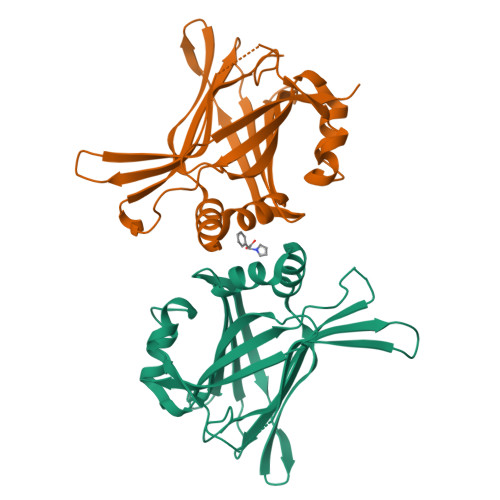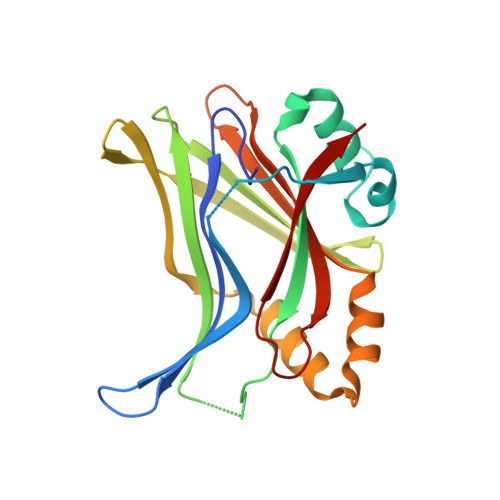Targeting YAP/TAZ-TEAD protein-protein interactions using fragment-based and computational modeling approaches.
Kaan, H.Y.K., Sim, A.Y.L., Tan, S.K.J., Verma, C., Song, H.(2017) PLoS One 12: e0178381-e0178381
- PubMed: 28570566
- DOI: https://doi.org/10.1371/journal.pone.0178381
- Primary Citation of Related Structures:
5XJD - PubMed Abstract:
The Hippo signaling pathway, which is implicated in the regulation of organ size, has emerged as a potential target for the development of cancer therapeutics. YAP, TAZ (transcription co-activators) and TEAD (transcription factor) are the downstream transcriptional machinery and effectors of the pathway. Formation of the YAP/TAZ-TEAD complex leads to transcription of growth-promoting genes. Conversely, disrupting the interactions of the complex decreases cell proliferation. Herein, we screened a 1000-member fragment library using Thermal Shift Assay and identified a hit fragment. We confirmed its binding at the YAP/TAZ-TEAD interface by X-ray crystallography, and showed that it occupies the same hydrophobic pocket as a conserved phenylalanine of YAP/TAZ. This hit fragment serves as a scaffold for the development of compounds that have the potential to disrupt YAP/TAZ-TEAD interactions. Structure-activity relationship studies and computational modeling were also carried out to identify more potent compounds that may bind at this validated druggable binding site.
Organizational Affiliation:
Institute of Molecular and Cell Biology, A*STAR (Agency for Science, Technology and Research), 61 Biopolis Drive, Singapore.

















